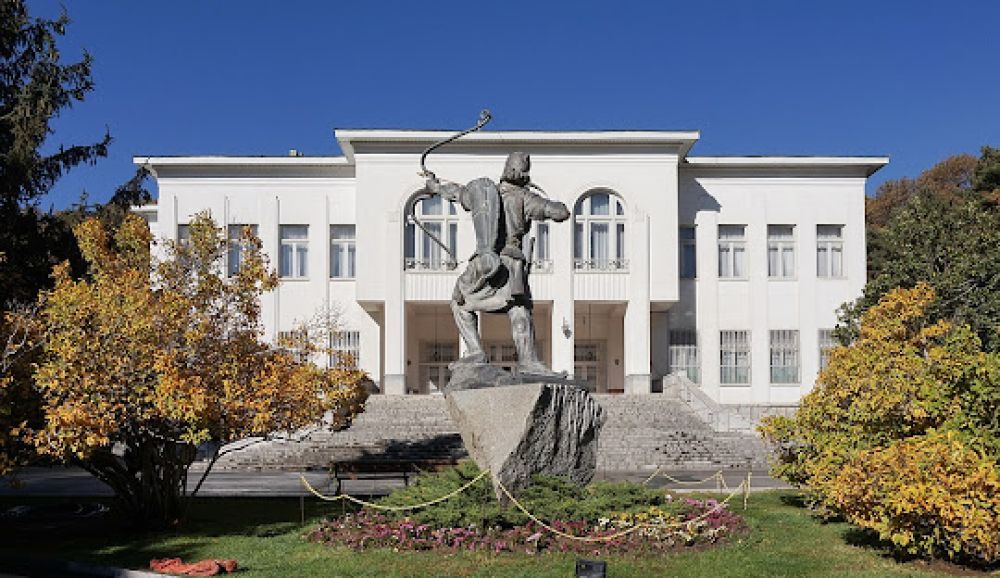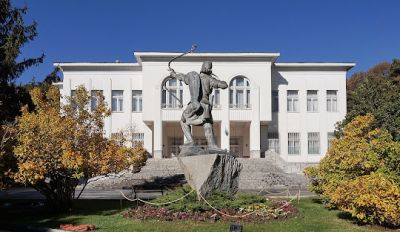

Explore the vast Sa'dabad Complex and its various palaces turned into museums, where each one offers a glimpse into Iran's rich history and culture. The complex was once the royal summer residence and is set against the picturesque backdrop of the Alborz Mountains, providing visitors with not just historical insights but also captivating views. As you walk through the palaces such as the White Palace (Melat Museum) and the Green Palace (Sabz or Shahvand Palace), you'll encounter an impressive collection of royal artifacts, fine art, and lavish furnishings that belonged to the Qajar and Pahlavi monarchs. Additionally, the museums display a variety of themes including royal clothing, weaponry, and an array of Persian art forms. The experience provides a unique perspective into the opulence and architectural style of Persian royalty, with each room and gallery narrating its own story of the past.
The Royal Costume Museum, nestled within Sa'dabad Complex, offers a fascinating journey through the fashion and textiles that once adorned Persian monarchs. Visitors can marvel at the intricacy of the royal garments, some of which are adorned with jewels and precious metals. Ranging from formal court attire to military uniforms and ceremonial garb, the museum paints a picture of Persian textile history and craftsmanship. The exhibits not only show the variety and elegance of royal wear but also reflect the social and political changes that influenced fashion throughout the Qajar and Pahlavi eras. As you explore the museum, descriptive panels in both Persian and English provide insightful context to the items on display, enriching your understanding of Iran's sartorial evolution across various dynasties.
The Fine Arts Museum of Sa'dabad Complex is a treasure trove of Iranian and European art, housed in a palace that once served as an office for the Pahlavi regime. Visitors to this museum will encounter an eclectic mix of artworks including paintings, sculptures, and delicate porcelain pieces. The collection comprises works by Iranian artists, showcasing their contribution to the global art scene, as well as numerous European pieces that have made their way into the royal collection. Some standout features of this museum include the intricate tilework, historical portraits, and modern art pieces that prompt reflection on the cultural exchanges between Iran and the West. The museum's tranquil setting and the quality of its exhibits make it a must-visit for art lovers and those interested in the cultural intersections of Iran's art history.
Dedicated to the elegant art of Persian calligraphy, the Mir Emad Calligraphy Museum is located within the Sa'dabad Complex and offers a deep dive into the significance of calligraphy in Persian culture. Named after one of Iran's most famous calligraphers, Mir Emad Hassani, the museum showcases an impressive array of calligraphic works ranging from historical manuscripts, inscribed Qur'anic verses, and poetry to modern interpretations of this ancient art form. The exhibits highlight the development of different styles and techniques over the centuries, offering visitors a comprehensive overview of the aesthetic principles and linguistic importance of calligraphy in Iran. Art enthusiasts and those looking to understand the profound spiritual and artistic value of this discipline will find the museum captivating.
While not located directly within the Sa'dabad Complex, the nearby Nature Bridge, also known as Tabiat Bridge, is an architectural marvel worth exploring. This contemporary pedestrian bridge spans across the Modarres Highway and connects two public parks—Taleghani Park and Abo-Atash Park. As a modern addition to Tehran's urban landscape, it has quickly become a popular gathering place for both locals and tourists. Standing on the bridge, you can enjoy panoramic views of the Alborz Mountains and the city skyline. The bridge itself showcases an intricate design that blends seamlessly with nature. Across its multi-level structure, visitors can find a variety of cafes, restaurants, and sitting areas designed to encourage socializing and relaxation amidst the bustling city life. Visiting the bridge provides a fresh perspective on Tehran's commitment to contemporary architecture and public spaces.
The Greenhouse Garden of the Sa'dabad Complex is a serene escape that showcases the diversity of Iran's native flora as well as plants from around the world. This green oasis is housed in a historical glass structure that dates back to the Qajar era. As you walk through the garden, you'll come across a variety of exotic plants and flowers all meticulously maintained. The aesthetically pleasing arrangement of the garden, with its small ponds and fountains, provides a tranquil ambiance that's a refreshing change from the hustle and bustle of the city. The garden is a living testimony to the importance of horticulture in Persian culture and a paradise for botany enthusiasts. Visitors can enjoy the vibrant colors and fragrances, and perhaps take a moment of quiet reflection or indulge in photography amidst the lush surroundings.
The Water Museum at the Sa'dabad Complex delves into the historical and cultural significance of water in Iran. With its historical aqueducts and water management systems, Iran's ancient civilization shows a deep understanding and respect for this precious resource. The museum illustrates the methods and structures used to harness and distribute water, such as qanats (underground channels), water mills, and cisterns. It is housed in a historically relevant building that once served as a water distribution point for the complex. Visitors will learn how these innovations played a central role in the development of Persian gardens and cities, and how they reflect the ingenuity of Iranian engineering. This specialized museum offers a unique educational experience, highlighting the blend of sustainability, necessity, and art that characterizes the historical approach to water in Iran.
Car enthusiasts will find the Royal Automobile Museum within Sa'dabad Complex particularly engaging. This museum houses an exhaustive collection of vintage and classic cars that belonged to Iran's last Shah, Mohammad Reza Pahlavi, and his royal court. The collection includes a stunning array of luxury cars, sports cars, and limousines from prestigious manufacturers such as Rolls Royce, Mercedes-Benz, and Cadillac. While browsing the vehicles on display, visitors can glean insights into the personal tastes of the Shah and the cultural status of automobiles during his reign. The museum not only showcases the cars' exterior elegance but also provides information about the mechanical prowess that made these models iconic during their time. The Royal Automobile Museum is more than just a display of lavish lifestyles; it represents a segment of 20th-century history that was characterized by technological progress and social prestige.
The Royal Kitchen Museum, situated within the Sa'dabad Complex, offers an intriguing look at the culinary history and traditions of Iran's royal families. This establishment once served as the main kitchen for the complex and has been restored to showcase the array of utensils, stoves, and tableware that constituted a royal Persian kitchen. Visitors can explore the collection of copper pots, royal china, and elaborate serving dishes that reveal not only the gastronomic habits of the Qajar and Pahlavi dynasties but also the intricacies of Persian cuisine. The museum also provides insight into the large-scale meal preparations and royal banquets of the time. The meticulously arranged displays, complete with lifelike mannequins, depict the bustling activities of a bygone era, creating an atmosphere that transports you back in history to imagine the sumptuous feasts that were once prepared within these walls.
For those seeking a comprehensive understanding of the Sa'dabad Complex, a cultural and historical walking tour covers the main highlights of this expansive site. Led by knowledgeable guides, this tour traverses the various palaces, museums, and gardens, providing rich historical context and anecdotes about the complex's past residents and purposes. As you walk through the lush greenery and ornate buildings, you'll gain a deeper appreciation for Iran's history, art, architecture, and the intricate role the Sa'dabad Complex has played in the nation's cultural narrative. This leisurely stroll through one of Tehran's most significant landmarks is a perfect way to absorb the majesty of Persian royalty while engaging directly with Iran's heritage. The tour experience reaffirms the complex's status as a cultural haven and a custodian of Persian legacy in the heart of modern Tehran.
